Christodoulos Kechris
Time series saliency maps: explaining models across multiple domains
May 19, 2025Abstract:Traditional saliency map methods, popularized in computer vision, highlight individual points (pixels) of the input that contribute the most to the model's output. However, in time-series they offer limited insights as semantically meaningful features are often found in other domains. We introduce Cross-domain Integrated Gradients, a generalization of Integrated Gradients. Our method enables feature attributions on any domain that can be formulated as an invertible, differentiable transformation of the time domain. Crucially, our derivation extends the original Integrated Gradients into the complex domain, enabling frequency-based attributions. We provide the necessary theoretical guarantees, namely, path independence and completeness. Our approach reveals interpretable, problem-specific attributions that time-domain methods cannot capture, on three real-world tasks: wearable sensor heart rate extraction, electroencephalography-based seizure detection, and zero-shot time-series forecasting. We release an open-source Tensorflow/PyTorch library to enable plug-and-play cross-domain explainability for time-series models. These results demonstrate the ability of cross-domain integrated gradients to provide semantically meaningful insights in time-series models that are impossible with traditional time-domain saliency.
Don't Think It Twice: Exploit Shift Invariance for Efficient Online Streaming Inference of CNNs
Aug 06, 2024
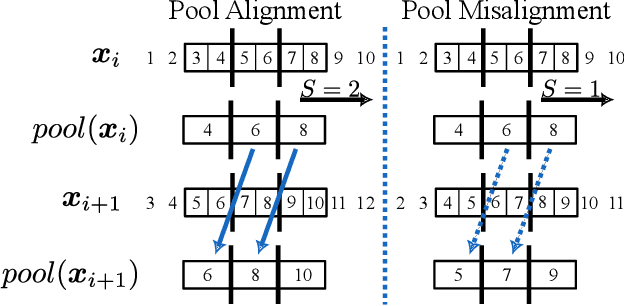
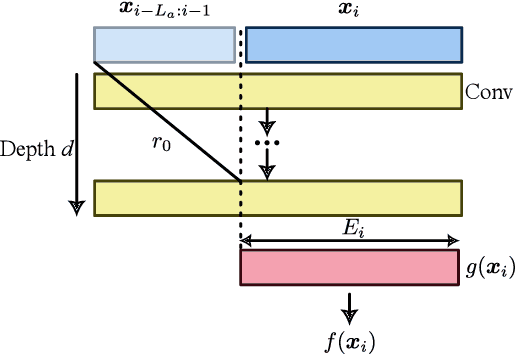
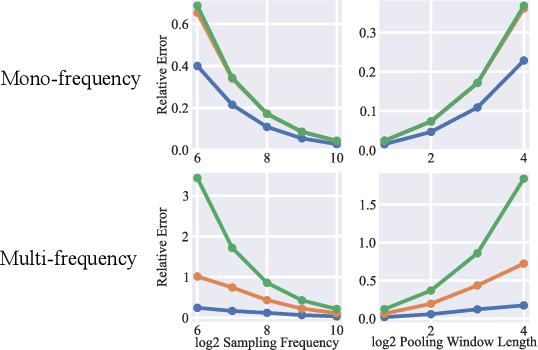
Abstract:Deep learning time-series processing often relies on convolutional neural networks with overlapping windows. This overlap allows the network to produce an output faster than the window length. However, it introduces additional computations. This work explores the potential to optimize computational efficiency during inference by exploiting convolution's shift-invariance properties to skip the calculation of layer activations between successive overlapping windows. Although convolutions are shift-invariant, zero-padding and pooling operations, widely used in such networks, are not efficient and complicate efficient streaming inference. We introduce StreamiNNC, a strategy to deploy Convolutional Neural Networks for online streaming inference. We explore the adverse effects of zero padding and pooling on the accuracy of streaming inference, deriving theoretical error upper bounds for pooling during streaming. We address these limitations by proposing signal padding and pooling alignment and provide guidelines for designing and deploying models for StreamiNNC. We validate our method in simulated data and on three real-world biomedical signal processing applications. StreamiNNC achieves a low deviation between streaming output and normal inference for all three networks (2.03 - 3.55% NRMSE). This work demonstrates that it is possible to linearly speed up the inference of streaming CNNs processing overlapping windows, negating the additional computation typically incurred by overlapping windows.
DC is all you need: describing ReLU from a signal processing standpoint
Jul 23, 2024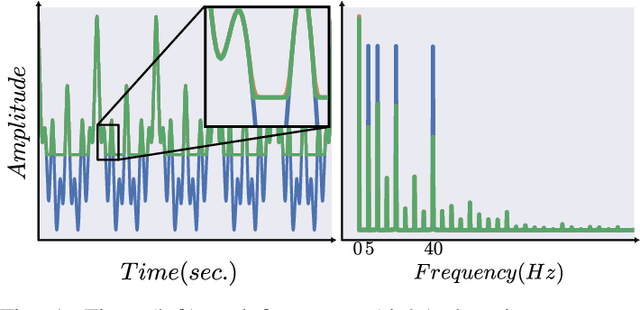
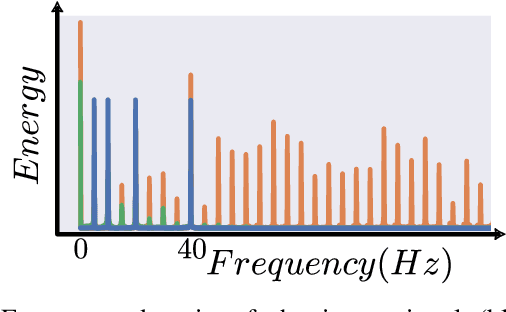
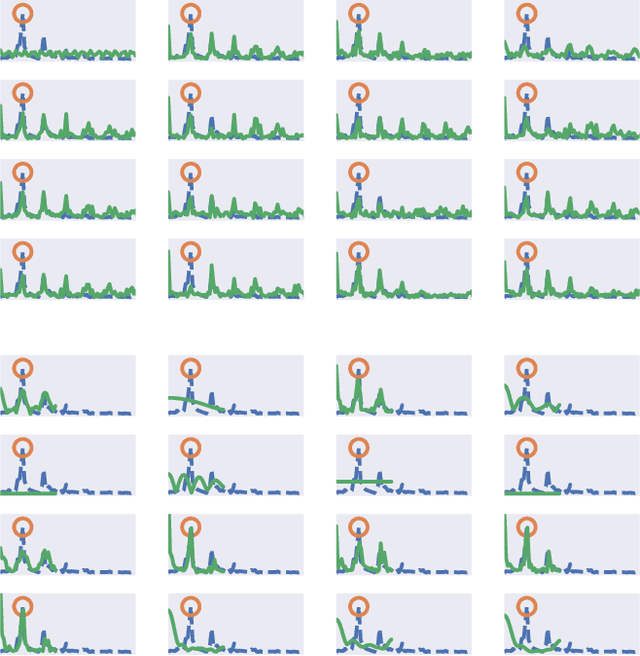

Abstract:Non-linear activation functions are crucial in Convolutional Neural Networks. However, until now they have not been well described in the frequency domain. In this work, we study the spectral behavior of ReLU, a popular activation function. We use the ReLU's Taylor expansion to derive its frequency domain behavior. We demonstrate that ReLU introduces higher frequency oscillations in the signal and a constant DC component. Furthermore, we investigate the importance of this DC component, where we demonstrate that it helps the model extract meaningful features related to the input frequency content. We accompany our theoretical derivations with experiments and real-world examples. First, we numerically validate our frequency response model. Then we observe ReLU's spectral behavior on two example models and a real-world one. Finally, we experimentally investigate the role of the DC component introduced by ReLU in the CNN's representations. Our results indicate that the DC helps to converge to a weight configuration that is close to the initial random weights.
Acoustical Features as Knee Health Biomarkers: A Critical Analysis
May 23, 2024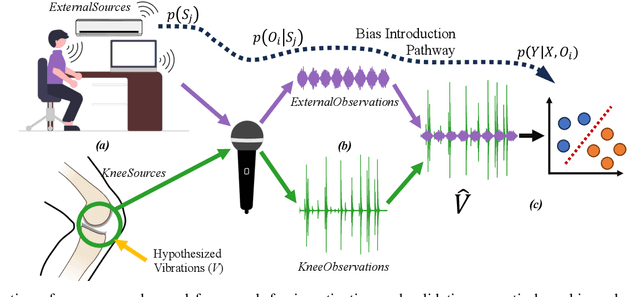

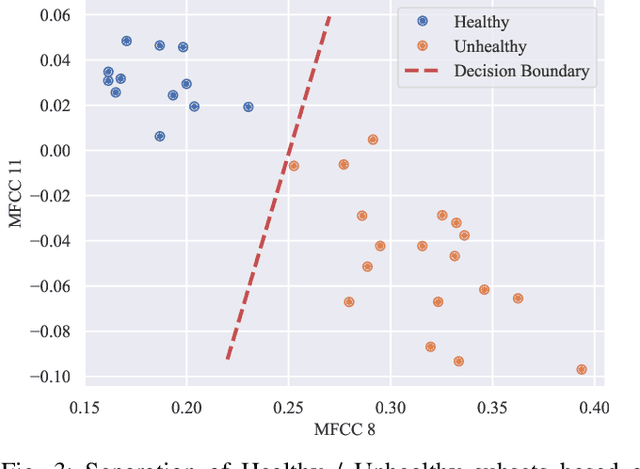

Abstract:Acoustical knee health assessment has long promised an alternative to clinically available medical imaging tools, but this modality has yet to be adopted in medical practice. The field is currently led by machine learning models processing acoustical features, which have presented promising diagnostic performances. However, these methods overlook the intricate multi-source nature of audio signals and the underlying mechanisms at play. By addressing this critical gap, the present paper introduces a novel causal framework for validating knee acoustical features. We argue that current machine learning methodologies for acoustical knee diagnosis lack the required assurances and thus cannot be used to classify acoustic features as biomarkers. Our framework establishes a set of essential theoretical guarantees necessary to validate this claim. We apply our methodology to three real-world experiments investigating the effect of researchers' expectations, the experimental protocol and the wearable employed sensor. This investigation reveals latent issues such as underlying shortcut learning and performance inflation. This study is the first independent result reproduction study in the field of acoustical knee health evaluation. We conclude with actionable insights from our findings, offering valuable guidance to navigate these crucial limitations in future research.
KID-PPG: Knowledge Informed Deep Learning for Extracting Heart Rate from a Smartwatch
May 02, 2024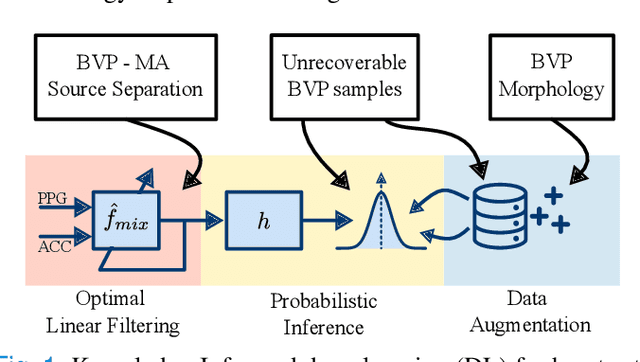
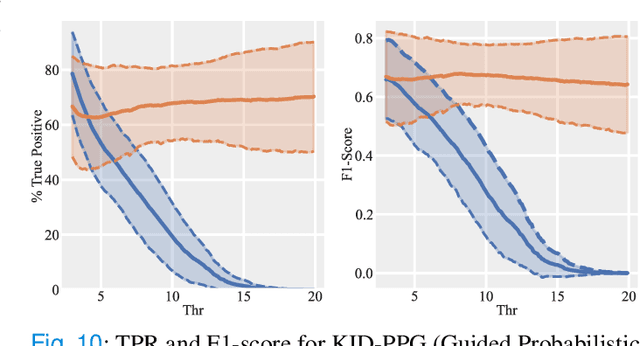
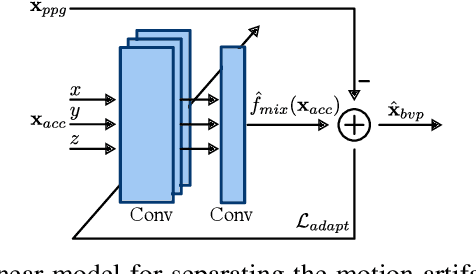
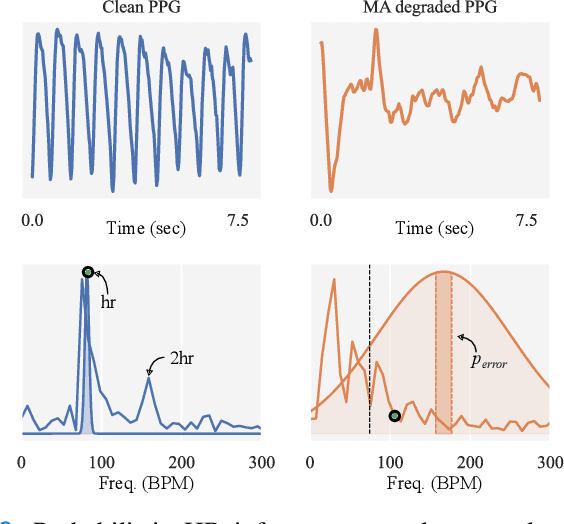
Abstract:Accurate extraction of heart rate from photoplethysmography (PPG) signals remains challenging due to motion artifacts and signal degradation. Although deep learning methods trained as a data-driven inference problem offer promising solutions, they often underutilize existing knowledge from the medical and signal processing community. In this paper, we address three shortcomings of deep learning models: motion artifact removal, degradation assessment, and physiologically plausible analysis of the PPG signal. We propose KID-PPG, a knowledge-informed deep learning model that integrates expert knowledge through adaptive linear filtering, deep probabilistic inference, and data augmentation. We evaluate KID-PPG on the PPGDalia dataset, achieving an average mean absolute error of 2.85 beats per minute, surpassing existing reproducible methods. Our results demonstrate a significant performance improvement in heart rate tracking through the incorporation of prior knowledge into deep learning models. This approach shows promise in enhancing various biomedical applications by incorporating existing expert knowledge in deep learning models.
Removing Noise from Extracellular Neural Recordings Using Fully Convolutional Denoising Autoencoders
Sep 18, 2021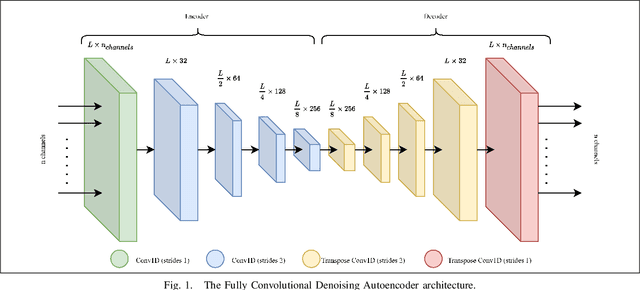
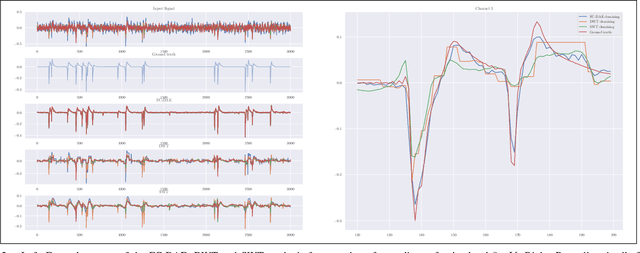
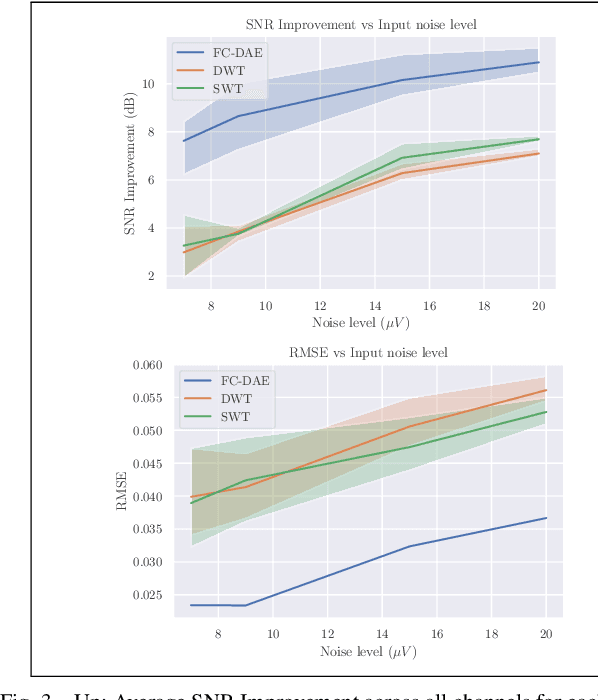

Abstract:Extracellular recordings are severely contaminated by a considerable amount of noise sources, rendering the denoising process an extremely challenging task that should be tackled for efficient spike sorting. To this end, we propose an end-to-end deep learning approach to the problem, utilizing a Fully Convolutional Denoising Autoencoder, which learns to produce a clean neuronal activity signal from a noisy multichannel input. The experimental results on simulated data show that our proposed method can improve significantly the quality of noise-corrupted neural signals, outperforming widely-used wavelet denoising techniques.
 Add to Chrome
Add to Chrome Add to Firefox
Add to Firefox Add to Edge
Add to Edge